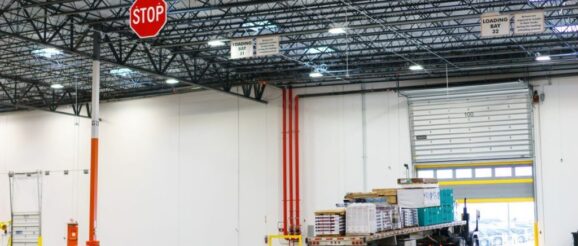The Home Depot’s culture of supply chain innovation | Convoy

This case study was originally published on FreightWaves
In 2017, The Home Depot announced an ambitious $1.2 billion investment in its supply chain, with a goal to construct approximately 150 new logistics facilities in the United States within three years.
Today, that investment looks incredibly prescient, as The Home Depot’s focus on serving customers no matter how they shop – in stores or online – supported 80% digital sales growth in the third quarter of 2020, with 60 percent of those orders fulfilled at stores.
All told, in the third quarter, The Home Depot’s comparable U.S. sales were up 24.6% year-over-year in perhaps the most challenging business environment that retailers have faced this century. The Home Depot’s Supply Chain operation bobbed and weaved during the COVID-19 pandemic by leveraging deep relationships with suppliers and partners, changing flow paths, expanding operating hours, and reallocating resources from different parts of the business to ensure their supply chain remained fluid.
But the company’s achievements in 2020 weren’t just the result of tactical adjustments made during the pandemic or because it had a denser supply chain network and better fulfillment capabilities. It’s become increasingly clear that The Home Depot’s Supply Chain has fostered a culture of innovation that encourages experimentation and collaboration with freight tech startups, a serious commitment to sustainability, and new ways of partnering with carriers.
These strategies tend to self-reinforce, as in the case of Home Depot’s heavy reliance on drop trailers. Home improvement freight tends to be bulky, heavy, and difficult to handle: think of appliances, lumber, light fixtures, and power tools. That makes loading and unloading time-consuming, potentially delaying carriers and pushing detention costs higher. To keep its carriers happy, Home Depot deploys drop trailers extensively through its network, allowing carriers to get in and out quickly without waiting for live loads and unloads.
Separating the tractor and trailer creates an additional physical asset to manage and another matching problem to solve in the yard, but when drop trailer networks are running smoothly, carriers stay happy.
As the COVID-19 pandemic spread, shippers across the country had to deal with new problems: assess the possibility of social distancing in warehouse and distribution facilities and deal with extraordinarily volatile demand. Home Depot worked quickly to lessen the impact on drivers and implemented a flexible strategy for loading and unloading trucks.
In partnership with companies like Convoy, the new transportation strategy helped carriers deal with difficult-to-handle freight and ended up playing a key role in keeping Home Depot’s network fluid.
“Since we started working together, Convoy has continued to perform at best-in-class capacity levels and on-time performance,” said Ron Guzzi, senior manager of carrier relations and sourcing at The Home Depot. “Convoy’s capacity model is sustainable through the volatility of the trucking industry.”
It’s always been difficult for freight brokerages and non-asset transportation providers to offer drop trailer solutions. Typically, brokers need carriers to commit their trailers, but most brokers work with small carriers who lack shipper relationships and extra trailer capacity. That’s where Convoy was able to offer Home Depot an innovative solution with its own gray trailer pool through a program called Convoy Go.
“We like Convoy’s universal trailer pool model which they are expanding across the country,” Guzzi said. “This model gives The Home Depot what we are looking for as a drop-and-hook shipper that leverages trailer pools to keep our supply chain fluid and also keeps drivers moving and efficient.”
“We’ve worked with The Home Depot since 2018, , and we’ve repeatedly heard from The Home Depot team that they want to be on the front line of supply chain innovation.They’ve had a high appetite for trying out new programs like Convoy Go, and dynamic pricing programs like Convoy Guaranteed Primary,” said Tucker Tillman, manager at Convoy.
From its billion-dollar investment in supply chain infrastructure to its carrier-friendly drop-and-hook freight and continuing culture of technology experimentation, The Home Depot has made innovation part of its supply chain DNA.
